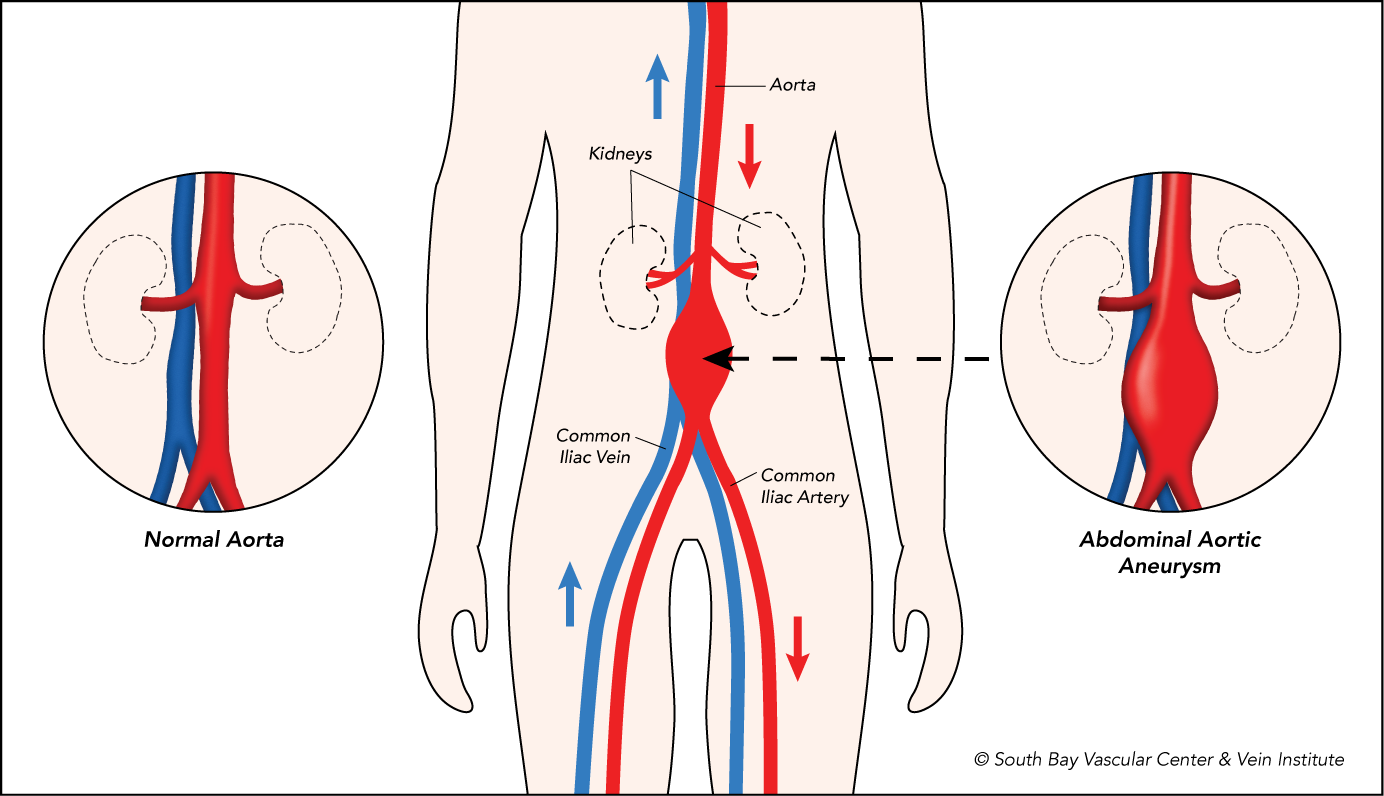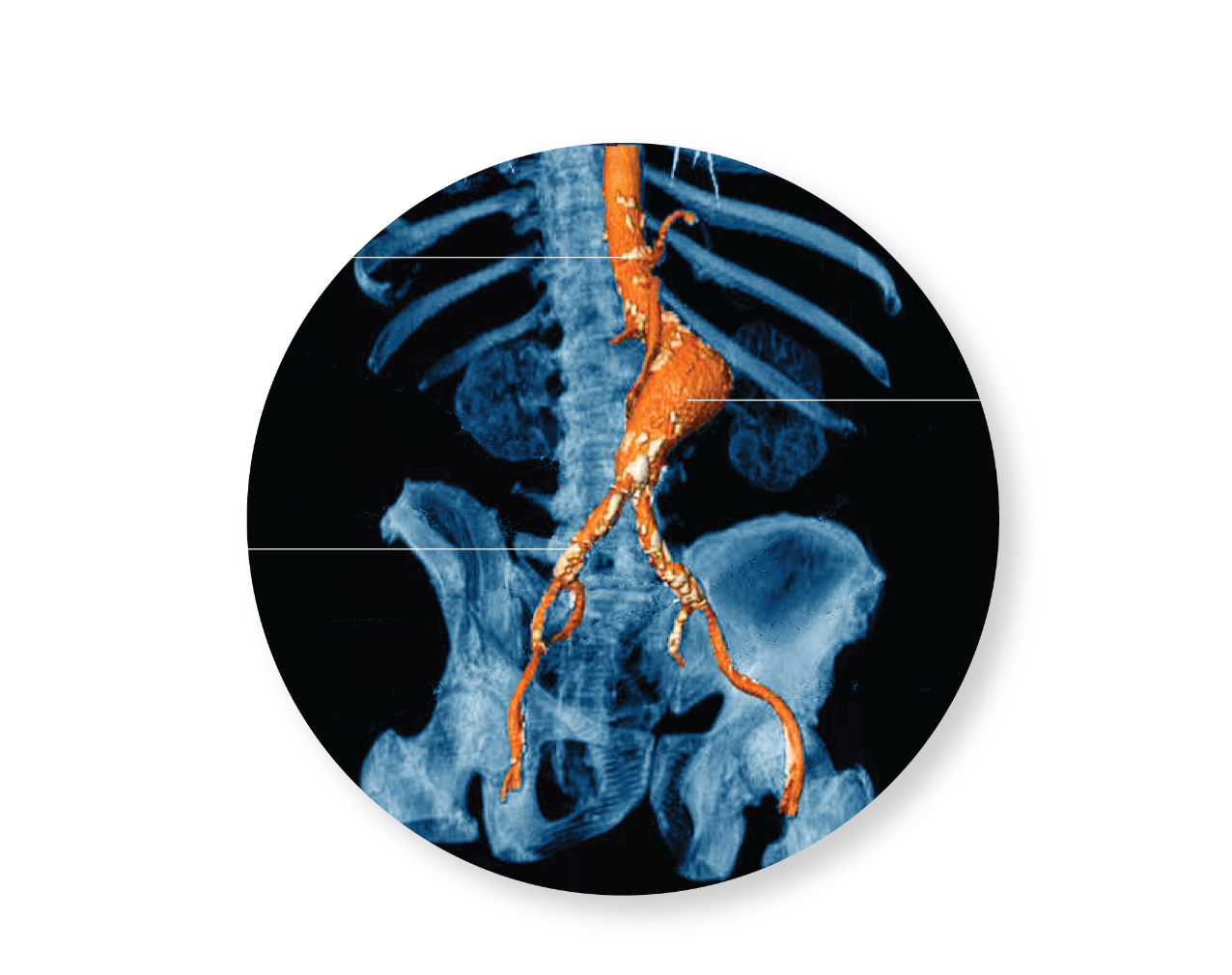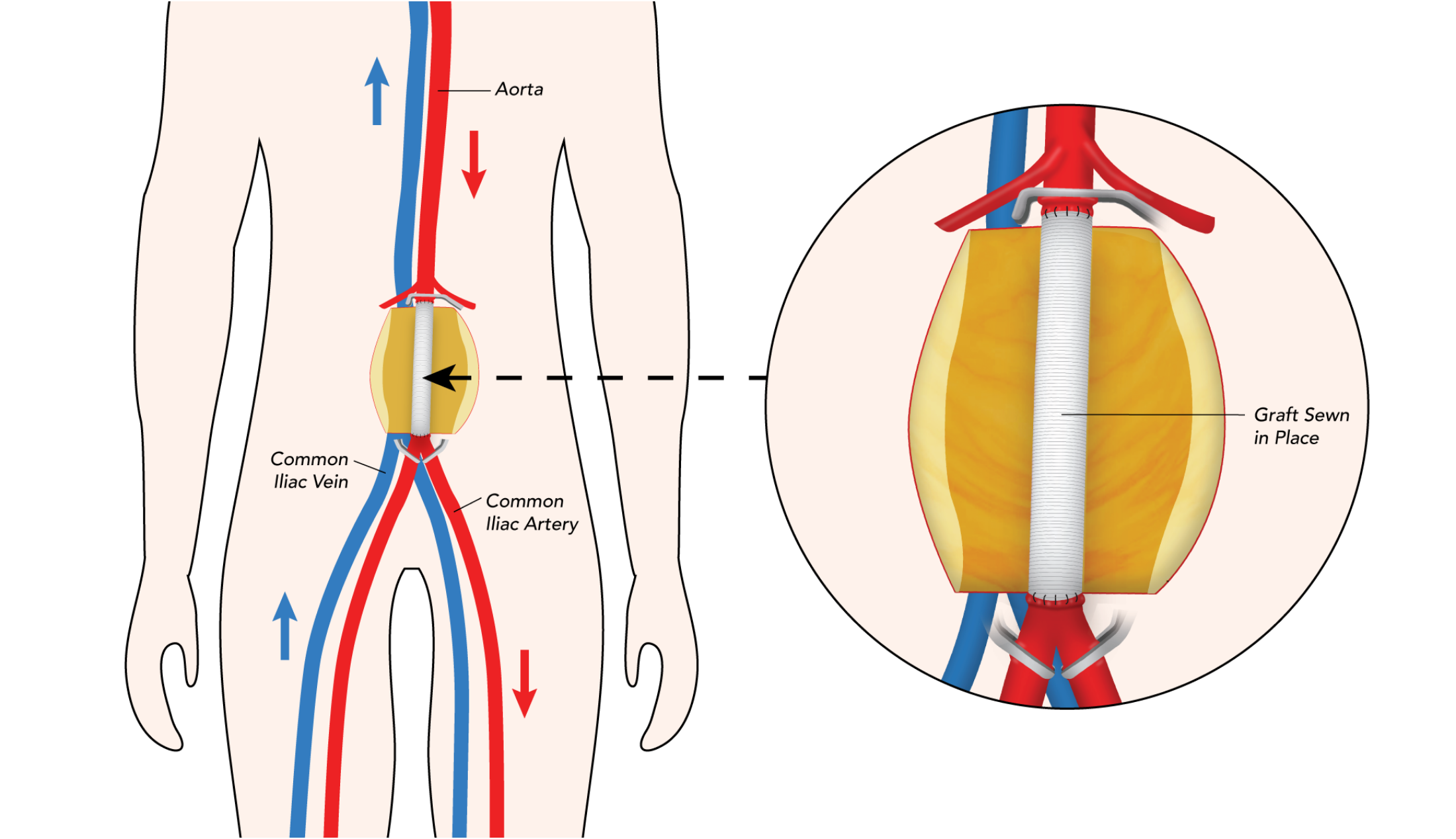As an aneurysm becomes larger, it is more likely to rupture (like a balloon that pops as it is blown up), which causes bleeding into the abdomen. The mortality rate from ruptured AAA is greater than 80%, even with emergency surgery. About 15,000 people die from this every year, and it is the 10th leading cause of death in men over the age of 60.
At South Bay Vascular, Dr. Polyxene (Polly) Kokinos and her team of experts provide quick, painless and affordable screening ultrasound tests that can detect abdominal aortic aneurysms before they cause serious problems. We have offices conveniently located in Campbell, Gilroy, and Santa Cruz. We can help!

Symptoms
Aneurysms are usually asymptomatic but can be diagnosed as a pulsatile (beating) mass in the abdomen, by chance on a CT scan or x-ray, or on a screening ultrasound. When they rupture, they can cause severe abdominal, back, or flank pain, dizziness, rapid heartbeat, or shock.
Risk Factors
- Most common in men over the age of 60
- History of smoking
- High blood pressure (hypertension)
- Family history of AAA
- COPD (Chronic Obstructive Pulmonary Disease)

Solutions
Medicare has instituted a screening program for all men as they become 65 years of age, if they have smoked more than 200 cigarettes (10 packs) over their lifetime. At South Bay Vascular, we actively educate patients and physicians about the importance of doing this easy, quick, and painless exam.
If the aneurysm is found on ultrasound to be more than 4.5cm, you will be sent for a CT scan to measure more accurately the size of the aneurysm and its relationship to other important structures. The risk of rupture becomes significant when the diameter of the aneurysm becomes greater than 5.5 cm. It is at that diameter that we usually recommend repair of the aneurysm.
Many aortic aneurysms can now be repaired by inserting an endovascular stent through the groin. The stent is actually made up of three sections that are inserted and then connected to “bypass” the aneurysm and keep blood flowing from the main aortic artery to the right and left iliac arteries. This minimally invasive surgery is done in a hospital but generally requires only an overnight stay, with recovery taking several weeks. Dr. Kokinos is experienced and highly skilled at this delicate procedure.

These images are from an actual South Bay Vascular patient who was diagnosed with an aortic aneurysm on an ultrasound screening. The aneurysm measured 5.6 cm on the CT scan shown above.

To prepare for the repair procedure, precise measurements were taken of the diameter of the main aortic artery (top) and the two common iliac arteries (bottom left and right) to determine the proper size for the stent.

During the surgery, the endovascular stent graft is carefully guided into place with a catheter that is inserted through the groin. Once the procedure is completed, the stent graft device is in place and expanded, and the aortic aneurysm is excluded. Blood can now flow safely through the aortic artery down to the lower extremities.

In some cases, aneurysm requires an open surgery to be treated. This involves making an incision in the abdomen and hand-sewing a fabric graft into place. For open surgery, patients usually stay in the hospital for 5-10 days; recovery can take up to 3 months.
“Dr. Kokinos has provided me with years of life that would have ended in April 2012 had she not repaired my ruptured Abdominal Aortic Aneurysm successfully, just one week before my 66th birthday. I have thanked you every day since. You have ensured I reached my 70th birthday and had the greatest of happiness in recently celebrating my 50th wedding anniversary.”
– SBVC patient’s family
“Dr. Kokinos saved my 84-year-old father’s life after his aneurysm ruptured. We thank God for her every night at dinner.”
– SBVC patient

